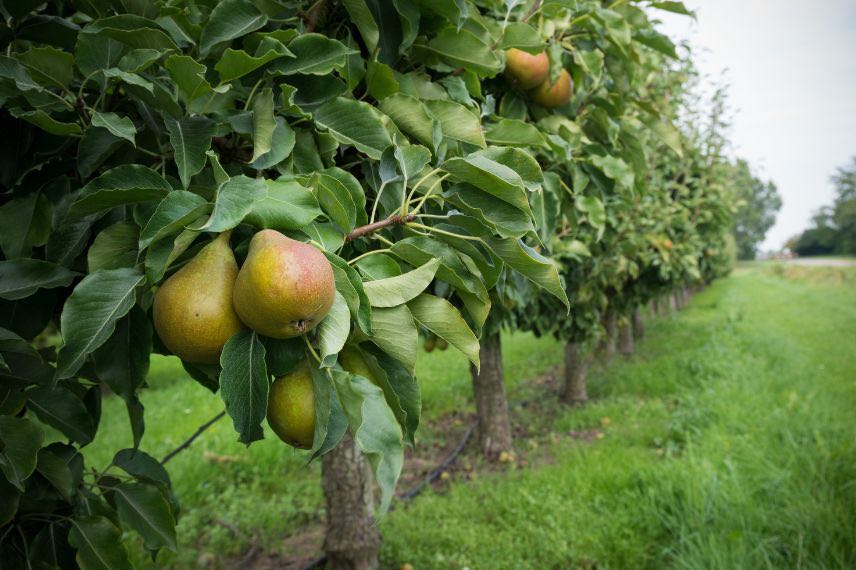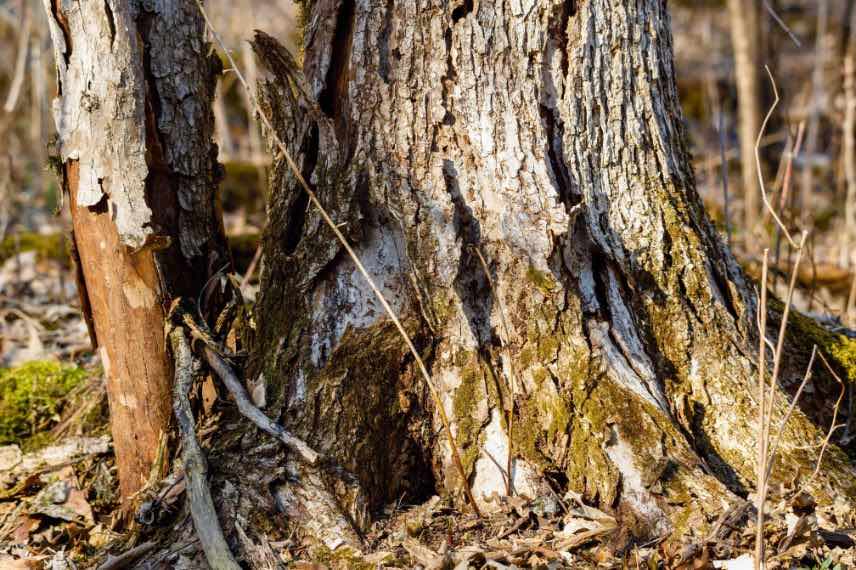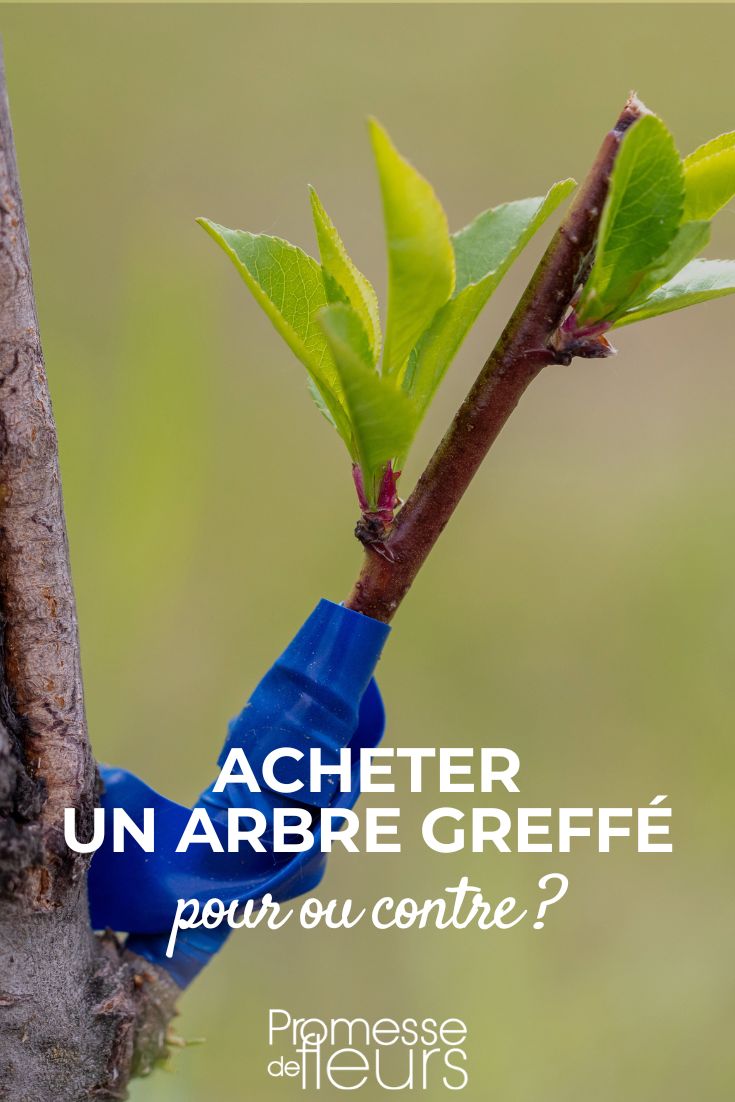Every gardener, whether amateur or professional, faces a crucial choice when they wish to add a new tree to their garden: to opt for a grafted tree or not? But what exactly is a grafted tree? In simple terms, grafting is a horticultural technique that involves joining two plants so that they grow together. The rootstock nourishes the scion with water and nutrients, while the scion provides gardeners with fruits, flowers, or specific foliage.
This method has many advantages and benefits as it often allows for trees with specific characteristics, whether in terms of resistance, fruiting, or appearance. However, the topic of grafting trees and shrubs can sometimes be contentious. So, are you for or against grafting? Let’s take a look at the advantages and disadvantages of purchasing a grafted tree to help you make an informed choice.

We are totally for it!
Multiplying without worries
Sometimes, sowing does not always yield true to the parent plant. Occasionally, propagation by cuttings is not feasible, as it can be too complicated (or even impossible!). In these cases, to faithfully multiply a specific variety or cultivar, there is only one solution: grafting.
Soil adaptation
Depending on the soil, certain varieties or species of trees or shrubs may not thrive in your garden. What to do in this case? Choose a rootstock suitable for the soil and closely related botanically to the subject being grafted. And that’s it! For example: grafted pear trees on hawthorn for calcareous soils.

Resistance to diseases and pests
In the same vein as soil adaptation, one can choose a rootstock selected for its resistance to certain soil diseases or pests. For example: certain citrus trees tested for their resistance to Phytophthora gummosis or the systematic grafting of vines against phylloxera.

Increase vigour or reduce it
Either by adopting a very vigorous rootstock or, conversely, by using a dwarfing rootstock. This allows for adapting a tree or shrub to the desired shape or size.
Genetic selection
One can fix certain natural mutations that may occur on a fruit tree, as well as on ornamental trees and shrubs. A special and completely different flower appears on your shrub? Great! We graft and reproduce this “mutation.” The same goes for particularly colourful fruits or foliage, for example.
Earlier harvest
Grafting allows for quicker fruiting: it often enables the first production of fruits within 2-3 years compared to sometimes ten years (or even more) for a seed-grown subject.
More fruits and more flowers
Grafting is also done to obtain more flowers on a relatively compact shrub. The same applies to fruit trees.
Cross-pollination
Some plants require cross-pollination to bear fruit. This means that the pollen from the flowers of another tree of the same species must fertilise the ovule of the flowers of the first tree. Therefore, to avoid planting several pear trees, for example, one can graft two scions of different varieties onto the same rootstock.
Grafting can also be considered when the species is dioecious: male plants are separate from female plants. In this case, it is sufficient to graft a female part onto a male plant (or vice versa).
Giving a second youth
This is becoming rare nowadays, but one can indeed rejuvenate an old tree by overgrafting. This means cutting back the branches and then regrafting directly onto the tree.
This method can also be used to change fruit varieties on an existing tree.
Sometimes we are a bit against...
Not everything is rosy in grafting, and there can be a few downsides. Let’s look at the some disadvantages inherent in grafting.
Weakening of the tree
The union between the rootstock and the scion, even if everything has gone well, is a wound or at least a point of weakness. Most of the time, this fragility is not an issue. Except, if your grafted trees are placed in full wind. A stronger gust than normal can break the tree at the graft point.
Decreased longevity
Grafted trees live shorter lives than their counterparts grown from seed or propagated by cuttings. Moreover, there is a difference in longevity depending on the vigour of the rootstock. For example: a grafted apple tree trained as a low-stem will only live between 30 and 40 years, compared to 60 years for a medium-stem or over 100 years for a high-stem. In contrast, a seed-grown apple tree can easily reach 300 years.
Grafting without purpose
Grafting is sometimes performed for obscure reasons on trees and shrubs that would thrive perfectly well on their own roots. For example: some botanical roses are sometimes offered grafted onto Rosa canina or another native botanical rose, even though they could simply be planted on their own roots without risk in most gardens. The same goes for Cornus controversa, which are too often grafted onto Cornus amomum or Cornus alba. In other words, research the plant you wish to adopt in your garden and ask yourself if it is really worth acquiring a grafted tree.
Higher price
Grafting a tree or shrub requires specialised work, care during the grafting phase, and the use of a rootstock and scions. Therefore, the purchase price of a grafted tree is higher than that of a plant produced by seed or cuttings.
Genetic impoverishment over time
A systematic or large-scale grafting (like propagation by cuttings) significantly reduces the mixing and natural genetic evolution of the plant, as sexual reproduction does not occur. Consequently, if a disease arises, the plant will not be able to "evolve" towards natural resistance. In other words, the population will be decimated in just a few years. This is likely what hastened the demise of nearly all cultivated elms due to Dutch elm disease.

Spread of pathogens
It’s paradoxical when one knows that one of the benefits of grafting is to provide a tree with increased resistance to certain diseases. However, the use of grafting materials (knife, grafting tool, ties...) that are not disinfected can introduce pathogens to a whole series of grafted plants in large-scale productions.
And what if it fails?
The scion may die, the rootstock may take over... In short, grafting a tree or shrub may not succeed or may not be sustainable.
Given all these arguments, it is clear that the choice to buy or not a grafted tree largely depends on the needs and preferences of each gardener. Grafted trees offer undeniable advantages in terms of specific characteristics and potential gains. However, they can also present challenges in terms of care and maintenance. Ultimately, each gardener must assess their own priorities and comfort level with gardening techniques. Whatever you decide, make sure to inform yourself well and choose the option that best suits your garden and aspirations.
































Comments